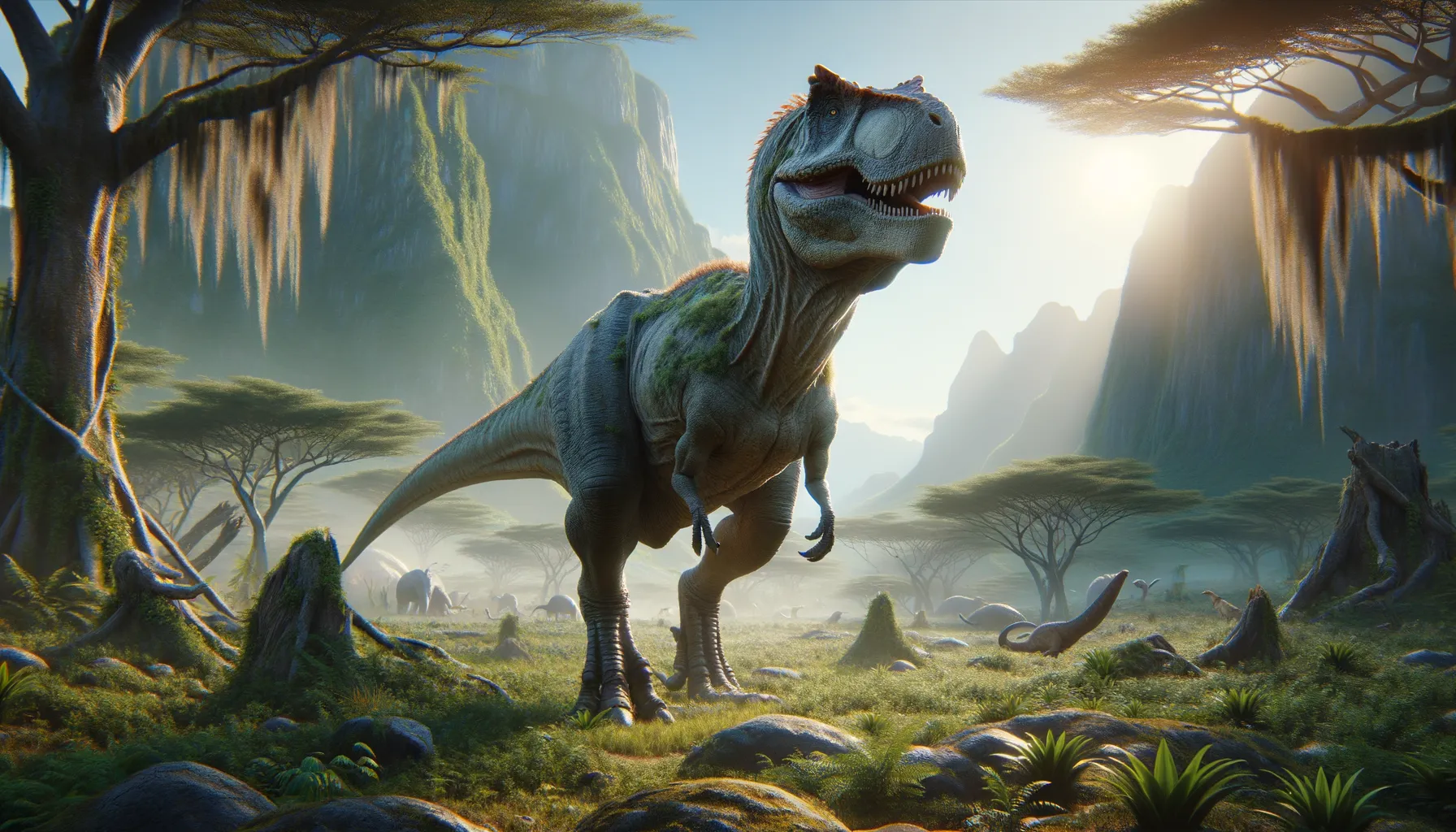
Hortalotarsus
Explore the ancient lands with Jurassic giants!
Period
Jurassic
Length
Measured about 6 meters in length.
Height
Approximately 3 meters tall at the hips.
Weight
Estimated at around 500 kilograms.
Hortalotarsus was a dinosaur with a moderately robust build, known predominantly from fossil remains found in South Africa. It lived during the Jurassic period and exhibited traits that suggest it was a bipedal herbivore. Its discovery contributed to our understanding of dinosaur diversity in the Southern Hemisphere during its time.
Diet
Hortalotarsus primarily fed on a variety of plants and vegetation. Its diet likely consisted of ferns, cycads, and other low-lying flora. This herbivorous lifestyle required constant grazing to sustain its energy needs.
Hunting
As an herbivore, Hortalotarsus did not engage in hunting. Instead, its survival depended on avoiding predators. It relied on its speed and size to deter carnivorous threats.
Environmental challenges
Hortalotarsus faced several challenges, including predation from larger carnivorous dinosaurs of the Jurassic. It also contended with environmental changes such as shifting climates and vegetation patterns. These changes could have affected the availability of food resources, making it necessary to adapt to new dietary options.
Speed
Moderate runner compared to its size.
Lifespan
Lived potentially up to 20 years.
First discovery
Discovered in South Africa in the late 1800s.
Fun Facts
- Hortalotarsus was a dinosaur whose name means 'gardener's ankle', as its fossils were first found in the farmed lands of South Africa.
- Despite its name suggesting it was known only from leg bones, Hortalotarsus was a more complete dinosaur than previously thought.
- Hortalotarsus was a herbivorous dinosaur, munching on the lush vegetation of the Late Triassic landscape.
- This dinosaur was relatively small compared to its Jurassic and Cretaceous cousins, showcasing the diversity of early dinosaurs.
- Hortalotarsus lived around 200 million years ago, during an exciting time when dinosaurs were beginning to dominate the Earth.
- Its fossils were first discovered in the 19th century, sparking interest and debates among early paleontologists about prehistoric life.
Growth and Development
Hortalotarsus hatched from eggs and underwent various growth stages to reach adulthood. Juveniles would have required ample quantities of food to support their rapid development. As they grew, their limbs and body structure changed, allowing them to eventually reach their full size.
Habitat
Hortalotarsus lived in an environment rich with lush vegetation and diverse plant life. This habitat provided the ideal conditions for an herbivorous dinosaur, with plenty of food and cover. The region's climate was likely warm, supporting the dinosaur's needs year-round.
Interaction with other species
Hortalotarsus coexisted with other herbivorous and carnivorous dinosaurs. Its interactions were mostly reactive, focusing on avoiding predators or competing for resources with other herbivores. Mutualistic relationships may have formed with smaller creatures that benefited from its grazing habits.
Natural lifespan
Hortalotarsus's lifespan in the wild is estimated to have reached up to 20 years.
Reproduction
Hortalotarsus reproduced by laying eggs in nests, likely hidden to protect from predators. Parent dinosaurs may have guarded the nests until hatching occurred. This reproductive strategy ensured the survival of the species through subsequent generations.
Social behaviour
Hortalotarsus may have formed small herds, offering protection and social interaction. These groups could have included several adults and juveniles, traveling together in search of food. Such social structures reduced risks from predators and improved chances of survival.
Fossil locations
The primary fossils of Hortalotarsus have been found in South Africa. These discoveries have provided invaluable insight into the diversity of Jurassic dinosaurs in this region. Fossil sites have helped paleontologists piece together the ecology and faunal interactions during its time.
